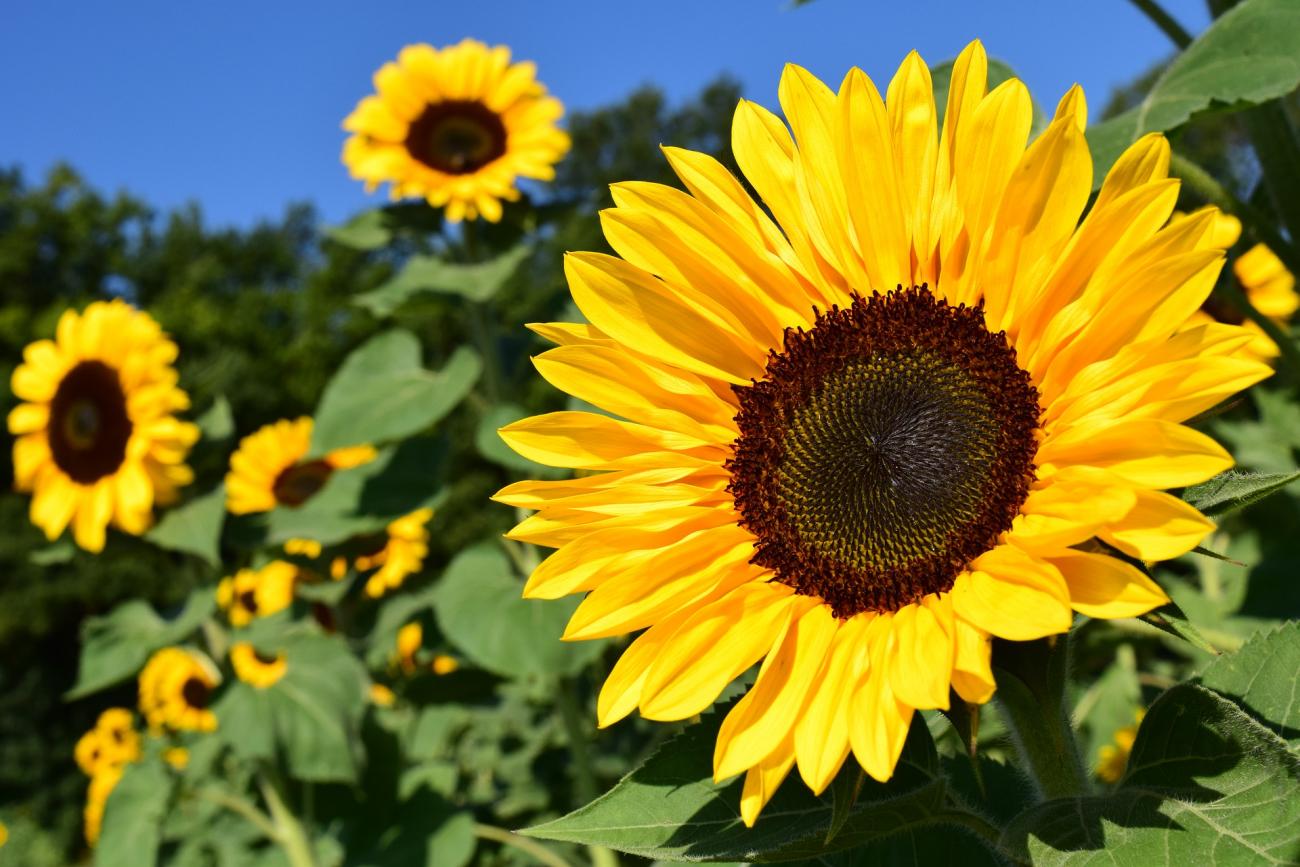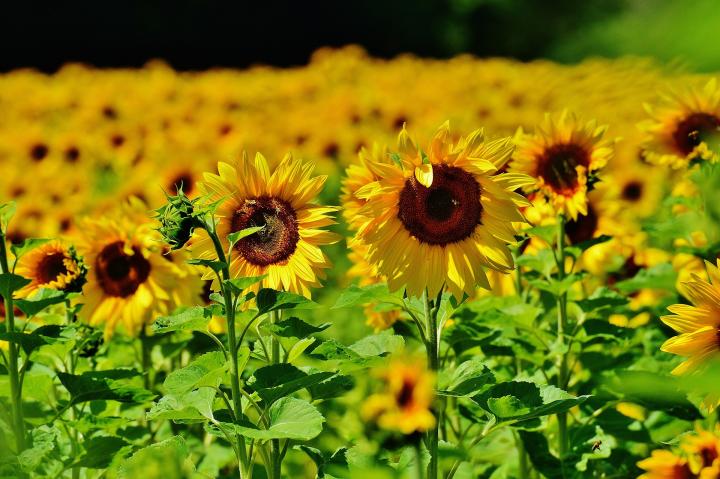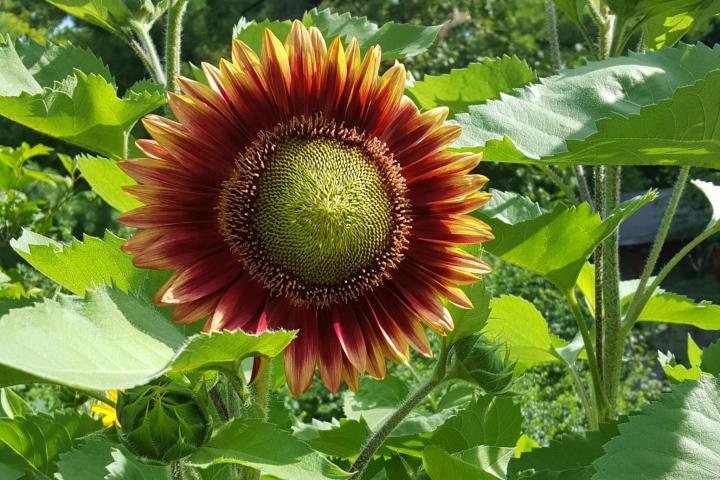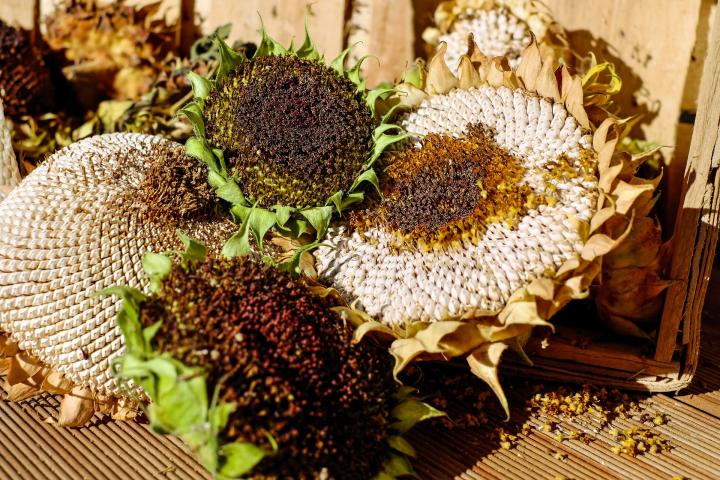Here and yonder, high and low,
Goldenrod and sunflowers glow.
–Robert Kelley Weeks (1840–76)
HOW LONG DO SUNFLOWERS TAKE TO BLOOM?
A fairly fast-growing flower, most sunflower varieties mature in only 85 to 95 days. The largest sunflower varieties grow to over 16 feet in height, while smaller varieties have been developed for small spaces and containers and rarely grow larger than a foot tall! The flower heads can can reach over 12 inches in diameter within the large seeded varieties.
Sunflowers are heliotropic, which means that they turn their flowers to follow the movement of the Sun across the sky east to west, and then returns at night to face the east, ready again for the morning sun. Heliotropism happens during the earlier stages before the flower grows heavy with seeds.
Very few plants are as heat-tolerant, resistant to pests, and simply beautiful. Sunflowers make excellent cut flowers and many are attractive to bees and birds.
At the end of the season, it’s easy to harvest sunflower seeds for a tasty snack or for replanting (see instructions below). Learn more about why you should start growing these happy flowers in your garden.




